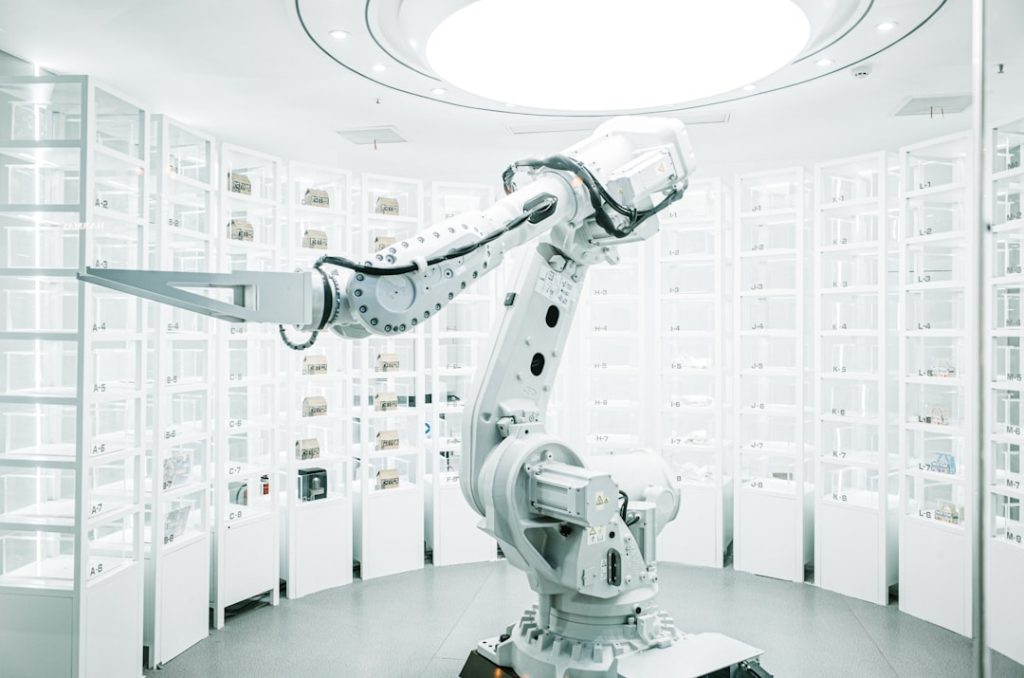In the rapidly evolving landscape of artificial intelligence, Claude AI has emerged as a significant player, particularly with the introduction of its innovative Voice Mode. This feature represents a pivotal shift in how users interact with AI, moving beyond traditional text-based communication to a more dynamic and engaging auditory experience. Voice Mode allows users to engage with Claude AI in a conversational manner, making interactions feel more natural and intuitive.
This development is not merely a technological upgrade; it signifies a broader trend towards more human-like interactions with machines, enhancing the overall user experience. The advent of Voice Mode is particularly timely, as the demand for more interactive and accessible AI solutions continues to grow. With advancements in natural language processing and speech recognition technologies, Claude AI’s Voice Mode leverages these innovations to provide users with a seamless auditory interface.
This capability not only broadens the scope of applications for Claude AI but also positions it as a frontrunner in the competitive AI landscape. By enabling voice interactions, Claude AI is setting new standards for user engagement and accessibility, catering to diverse user needs and preferences.
Key Takeaways
- Claude AI’s Voice Mode offers a new way for users to interact with the AI, providing a more natural and intuitive experience.
- Users can benefit from Voice Mode by enjoying hands-free interaction, improved accessibility, and a more personalized experience.
- Anthropic’s New Voice Mode utilizes advanced speech recognition and natural language processing to understand and respond to user commands.
- The development process of Claude AI’s Voice Mode involved extensive testing, refining, and integration of cutting-edge technology.
- Voice Mode has been seamlessly integrated into Claude AI’s existing features, enhancing the overall user experience and functionality.
The Benefits of Voice Mode for Users
The introduction of Voice Mode in Claude AI offers a multitude of benefits that enhance user experience significantly. One of the most notable advantages is the increased accessibility it provides. For individuals with visual impairments or reading difficulties, voice interaction can be a game-changer.
It allows these users to access information and engage with the AI without the barriers that text-based interfaces often present. This inclusivity is crucial in ensuring that technology serves all segments of society, promoting equal access to information and resources. Moreover, Voice Mode facilitates multitasking, allowing users to interact with Claude AI while engaged in other activities.
For instance, someone cooking in the kitchen can ask Claude AI for recipe suggestions or cooking tips without needing to stop and type on a device. This hands-free interaction not only saves time but also enhances productivity by allowing users to seamlessly integrate AI assistance into their daily routines. The convenience of voice commands can lead to more frequent use of the AI, ultimately fostering a deeper relationship between users and the technology.
How Anthropic’s New Voice Mode Works

Anthropic’s Voice Mode operates on sophisticated algorithms that combine advanced speech recognition with natural language processing capabilities. At its core, the system is designed to understand and interpret spoken language accurately, allowing for fluid conversations between users and Claude AI. The technology employs deep learning models trained on vast datasets of spoken language, enabling it to recognize various accents, dialects, and speech patterns.
This adaptability ensures that users from different linguistic backgrounds can interact with the AI effectively. The interaction process begins when a user activates Voice Mode, typically through a simple voice command or button press. Once engaged, the system listens for input and processes the spoken words in real-time.
The AI then generates a response based on its understanding of the query, which is subsequently delivered back to the user in a natural-sounding voice. This back-and-forth exchange mimics human conversation, making interactions feel more personal and engaging. Additionally, the system incorporates contextual awareness, allowing it to remember previous interactions and tailor responses accordingly, further enhancing the conversational experience.
The Development Process of Claude AI’s Voice Mode
The development of Claude AI’s Voice Mode was a complex endeavor that required extensive research and collaboration among experts in various fields. The process began with identifying user needs and preferences through surveys and focus groups. Understanding how users interact with technology was crucial in shaping the design and functionality of Voice Mode.
This user-centric approach ensured that the final product would resonate with its intended audience. Following the initial research phase, engineers and data scientists at Anthropic embarked on creating the underlying technology that powers Voice Mode. This involved training machine learning models on diverse datasets to improve speech recognition accuracy and response generation.
Rigorous testing was conducted to refine the system’s ability to handle different accents and speech nuances. Feedback loops were established, allowing developers to continuously improve the system based on real-world usage data. This iterative process was essential in creating a robust and reliable voice interaction system that meets user expectations.
The Integration of Voice Mode into Claude AI’s Existing Features
Integrating Voice Mode into Claude AI’s existing features was a strategic move aimed at enhancing the overall functionality of the platform. The developers recognized that voice interaction should complement rather than replace traditional text-based communication. As such, users can switch between modes seamlessly, depending on their preferences or situational needs.
This flexibility is particularly beneficial in environments where typing may be impractical or disruptive. Furthermore, Voice Mode has been designed to work harmoniously with other features of Claude AI, such as its knowledge base and task management capabilities. For example, users can verbally request information about specific topics or ask Claude AI to set reminders or schedule appointments using voice commands.
This integration not only streamlines user interactions but also enriches the overall experience by providing a cohesive interface that caters to various use cases. The result is an AI platform that feels more like a personal assistant than just a tool, fostering deeper engagement and satisfaction among users.
User Feedback and Reactions to Claude AI’s Voice Mode

Since its launch, Claude AI’s Voice Mode has garnered significant attention from users across different demographics. Early adopters have praised its intuitive design and responsiveness, highlighting how it enhances their daily tasks and interactions. Many users have reported that they find it easier to communicate with the AI using their voice rather than typing out queries, which can sometimes feel cumbersome or slow.
This positive feedback underscores the effectiveness of voice interaction in making technology more approachable and user-friendly. However, user feedback has not been without constructive criticism. Some users have expressed concerns regarding the accuracy of speech recognition in noisy environments or when multiple people are speaking simultaneously.
These insights have prompted Anthropic to prioritize ongoing improvements in noise cancellation and context recognition capabilities within Voice Mode. By actively listening to user experiences and addressing concerns, Anthropic demonstrates its commitment to refining Claude AI’s features and ensuring that they meet evolving user needs.
Future Plans for Enhancing Claude AI’s Voice Mode
Looking ahead, Anthropic has ambitious plans for further enhancing Claude AI’s Voice Mode. One area of focus is expanding language support to include more dialects and languages, thereby broadening accessibility for non-English speakers. By incorporating multilingual capabilities, Claude AI aims to reach a wider audience and cater to diverse linguistic backgrounds, reinforcing its position as an inclusive AI solution.
Additionally, Anthropic is exploring ways to integrate advanced emotional recognition into Voice Mode. By analyzing vocal tone and inflection, the system could potentially gauge user emotions during interactions, allowing for more empathetic responses. This capability would elevate the conversational experience by enabling Claude AI to respond not just based on content but also on the emotional context of the user’s input.
Such advancements could transform how users perceive and interact with AI, making it feel more like a companion than just a tool.
The Impact of Claude AI’s Voice Mode on the AI Industry
The introduction of Voice Mode by Claude AI marks a significant milestone in the evolution of artificial intelligence interfaces. By prioritizing natural language interactions through voice, Anthropic has set a new standard for user engagement in the AI industry. This innovation not only enhances accessibility but also fosters deeper connections between users and technology.
As other companies observe the success of Claude AI’s Voice Mode, it is likely that we will see similar developments across the industry as competitors strive to keep pace with this transformative approach to human-computer interaction. The implications extend beyond mere convenience; they touch upon fundamental questions about how we communicate with machines and how those machines can better understand us as individuals. In this context, Claude AI’s Voice Mode is not just an enhancement; it represents a paradigm shift that could redefine our relationship with artificial intelligence for years to come.



